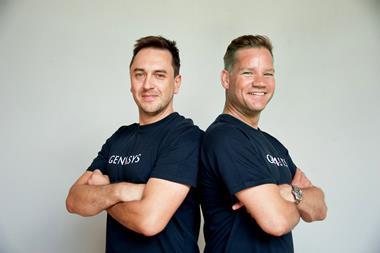Sponsored content: Gavin Peters, vice-president of marketing at software company Genasys Technologies, explains the value of collaboration and why new technologies must form ‘a coherent whole’ to benefit insurance businesses
As Insurance Times launches its first Insurtech 50 report, this serves as yet another reminder that insurance technology is developing at an astonishing rate. The 50 innovative companies listed in this report provide just a brief highlight of the breadth of technology now being utilised to improve the insurance experience for customers.
With so many opportunities out there and technology advancing all the time, the ability to manage the interaction of different technologies to provide unique and seamless experiences - from providing easy access to personalised products, to frictionless and reliable digital claims journeys - will be the key to driving future success within insurance businesses.

Advanced, cloud-based software propositions are creating new possibilities through making technology more open, available and cost efficient.
In this new world of insurtech, the curation of technologies into a unique ecosystem will drive far more innovation and differentiation than years spent on in-house development of proprietary technology.
This ecosystem approach is hardly a new idea. It’s how humans have built society - do what you’re good at and engage with others to do the rest.
Executing this approach well in modern insurance, however, is about more than trading services - it needs real expertise, tight processes and, crucially, access to technology designed for interoperability.

Successful chief information officers now play the role of ‘curator-orchestrator’.
Curating the ideal technology stack means focusing on overall solutions - not traditional products - carefully identifying the technologies that will add real value to customers’ experiences and placing a premium on interoperability when assessing partners.
Existing functionality is important, but how technologies work in isolation will be secondary to what they can deliver as part of a larger whole, which is where the orchestration comes in. The quality of application programming interfaces (APIs), integration documentation and a proven ability to deliver innovative partnerships will be crucial.
More than anything, how technologies connect to each other as a coherent whole - and not just from one technology to another - will define the success of an ecosystem approach.
Innovation can thrive when a tech stack is built around a single, core platform that everything can connect to.
This enables a modular approach featuring plug and play flexibility, where new technologies can be plugged in to a central administration platform without having to switch everything off at the mains and do a whole programme reset.
But don’t mistake plug and play for light touch partnerships.
Real added value for insurance customers can only be created by deep, intelligent integrations, where combined functionality - enabled by well designed APIs - creates a genuinely seamless single experience.
The next few years will provide the opportunity for a step change in the modernisation of insurance – those that succeed in driving this change will be the ones that genuinely recognise the value of collaboration.













































